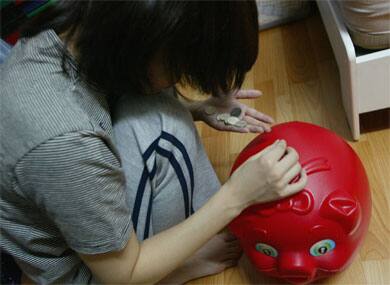“Education courses worth Rs 7 lakh to cost Rs 56 lakh in 15 years” said a Times of India headline today. Education costs are going up for sure. Just 10 years back a Bachelor of Pharmaceutical Scientist degree cost Rs 20,000 for a four-year course, and now the same course cost around Rs 6 lakh. In fact, the ToI report notes that over the last 15 -20 years, the cost of education in India has gone up by as much as 14-15 percent, compared with the general rate of inflation of around 7 percent.
Now let’s just take a look at house hold items, a loaf of bread cost Rs 9 in 2004-05, in 2008-09 the same bread cost Rs 13, today it costs Rs 22. LPG cylinder in 2004-05 cost around Rs 251, by 2008-09 it went to around Rs 350, today subsidized LPG costs Rs 450. A Mumbai-London air ticket cost in 2004-05 was around Rs 19,990, in 2008-09 around Rs 27,000 and today around Rs 32,400. Clearly, everything under the sun is becoming expensive, why wouldn’t the cost of education?
[caption id=“attachment_883875” align=“alignleft” width=“390”] How to plan[/caption]
How to plan[/caption]
And if that’s not enough to blow your mind off, sample this calculation we did. Suppose you are 30 years old today, with a monthly household expense of Rs 50,000, and a monthly saving of Rs 20,000. Assuming your investments earn an interest of 8.5 percent with an inflation of 7.5 percent, you would be able to save a retirement corpus of Rs 3,09,55,836. Don’t be too impressed with the number. To maintain your current life style you would actually need Rs 6,17,99,684. That’s Rs 3,0,8,43,848 less.
This clearly shows that be it cost everything has gone up, even the cost for your child’s education – a short term financial goal – or retirement needs – a long term financial goal – you will surely need to put aside some serious money. And that’s not at all, you will also need to do some major financial planning.
Firstpost take: We agree that planning for child’s education is important. We recommend that you avoid fancy child education plans available in the market. Instead, invest funds in equity mutual funds and exchange traded funds. And, two to three years prior to your child’s college admission, to move the money from equity to debt, so that you don’t expose the portfolio to unnecessary risk. Education loan is not a bad idea either. But it does mean your child starts her career in debt, unless you are ready to take the loan in your name. To know more about how education loans work, read this Firstpost story.
As far as overall investment goes, have a healthy mix of equity and debt, based on your risk profile. For retirement planning, keep this corpus separate from other financial goals such as child’s expenses. The EPF and PPF are good retirement tools. Until a few months back, _Firstpost r_ecommended NPS. But since then there have been some amendments in the product structure. It is better to avoid NPS for now, here’s why.
)